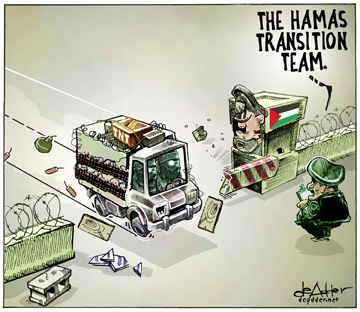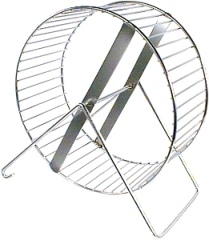Hamas Transition Team

Reprinted with permission from Mike Deadder.
From Harper’s Weekly this week:
Hawaiians were attempting to have the humuhumunukunukuapuaa (HOO-moo-HOO-moo-NOO-koo-NOO-koo-AH-poo-AH-ah) appointed as Hawaii’s state fish on a permanent basis after its five-year term expired. “It kind of looks like a pig and it squawks and everything,” said a humuhumunukunukuapuaa advocate.
AH-poo-AH-ah to you, this fine morning!
Kids love war.
Kids – especially boys – like toy guns, toy tanks, and toy soldiers. They love making explosion and rat-tat-tat machine gun sounds. They love dressing up like knights and vikings and manufacturing weapons out of bits of cardboard, string and wood.
When I was a kid I obsessively drew pictures of war. My drawings were full of fighter jets, tanks, and of course, explosions. As I drew I would make sound effects, imagining the battle in all its fantastic detail.
To a child, war is exciting, full of adventures and exploits. The explosions of bombs and missiles are like fireworks on steroids. And war is full of cool machinery and gadgets: sleek jets, powerful tanks and night-vision goggles.
Kids love war, until they experience one in real life.
Many adults have a love affair with war too. In adults, the childish love of gear and explosions acquires a grown-up taint: a dislike of Muslims, perhaps, or reflexive invocations of the “war on terror” or the need to “bring the fight to the enemy”, or maybe a messianic desire to bring “democracy” to the world.
It’s no surprise that George W. Bush hasn’t experienced war in real life either.
***
In every childhood sandbox and on every busy beach, there are children building sand castles. These elaborate constructions (which are sometimes populated by green army men who make rat-tat-tat noises as they battle each other) are always threatened with demolition by the one kid whose primary goal is to wreck stuff.
He – and in my childhood experience, it was always a “he” – isn’t very good at building sand castles himself, but he excels at destroying them, to the dismay of their creators.
Those who can create, create. Those who cannot, destroy.
Perhaps this is why artists – creative people – are frequently in the forefront of those opposed to war.
I watched part of today’s Democracy Now program over lunch. It focused on the victory of Hamas in yesterday’s Palestinian parliamentary elections, a remarkable upset victory over the ruling Fatah party.
This issue deserves a complete post, but in the meantime, I’m struck by the odd similarity between the election of Hamas in the Israeli-occupied territories and the election of the Conservatives here in Canada. From the interview with Mouin Rabbani, senior Middle East analyst with the International Crisis Group:
JUAN GONZALEZ: What do you see [as] the meaning of this vote? Was it more of a protest vote against Fatah, or was it really a marshalling of greater support for Hamas?
MOUIN RABBANI: It was both, and some other things. I think Hamas’ biggest success in this election was that it was able to appeal well beyond its core constituents, Palestinians who endorse both Hamas’ political agenda and its ideology. It was able to position itself as a protest party of choice, thus appealing to a vast number of Palestinians who do not necessarily agree with its political program, but wanted to see the monopoly on the Palestinian political system that’s exercised by the Fatah Movement broken, and that appears to have happened.
Substitute “Conservatives” for “Hamas” and “Liberals” for “Fatah”, and he could be talking about Canada’s election. (By no means am I comparing Hamas with the Conservatives, two groups whose ideologies and thankfully, tactics, could not be farther apart. It’s the parallels between the motivations of voters in the occupied territories and Canada, and the timing, that is interesting.)
My first pet rodent was a guinea pig named Zac, who I would let loose in my bedroom. He would hide under things and try to escape, but I was never worried about losing him because he expelled a pellet of dung once every 10 to 15 seconds. Hansel and Gretel’s trail of bread crumbs had nothing on Zac.
Washington, my gerbil, was next. We purchased him in a small Dundas pet shop owned by a man with a peculiar round appendage that dangled from his eyelid, like a bizarre fleshy monocle. Washington started out sociable, but after I saved up the money for an enormous second-hand acquarium and filled it to 6 inches from the top with compacted wood shavings – to simulate his natural burrowing habitat – he became viciously territorial.
I’d put my hand in the acquarium and scratch the surface of the shavings with my fingers. From deep inside his tunnelled lair I would hear the agitated thump-thump-thump of his powerful back legs pounding the ground (gerbils do this the way beavers slap their tails). Then he’d burst out from one of the holes on the surface. If I didn’t withdraw my hand fast enough, he’d bite into it hard enough to draw blood.
Next came our hamsters, Willy and Wumpy, two roly-poly balls of fur. Brothers, they started out affectionate and grew to hate each other, a phenomenon that coincided with the growth of their disproportionately enormous testicles.
Like all hamsters, Willy and Wumpy loved their hamster wheel. They took to it the moment it was placed in their cage. The cheap wheel we had was made of metal and had rungs instead of a solid running surface, like this one:

This is, apparently, the most dangerous type of hamster wheel, which comes as no surprise to me. Wumpy would get in the wheel and start running vigorously. Willy would try to get in, but since the wheel was already turning rapidly, he’d only make it halfway in before being carried upward and getting jammed between the wheel and the strut.
By the time Willy’d make it in, Wumpy would be frustrated by all the disruption and try to leave. This was difficult because by then Willy would be happily jogging on his way to nowhere. Wumpy would helplessly travel halfway up the wheel before falling back to the bottom, a process he would endure repeatedly.
The only way for Wumpy to leave was to stop the wheel, which meant jamming it with one of the only two body parts available: his head or his balls. Unsurprisingly, it was Wumpy’s head that usually ended up painfully purchasing his freedom.
To people, the thought of endlessly running but getting nowhere is torture. To say that one is doing something “like a hamster on an exercise wheel” means enduring endless and frustrating repetition.
Curiously, most people don’t seem to have the same negative feelings towards exercising on treadmills or stationary bikes. Perhaps this is because the similarities this draws between human and hamster are all too apparent.
With the exception of pet-owners, who swear by the unique intelligence of their particular friend, animals – especially small ones like hamsters – aren’t given much credit for similarities to people, especially when it comes to emotion or intelligence. In Philosophical Propositions: An Introduction to Philosophy, Jonathan Westphal writes about Camus’ “absurd world”:
[W]e become aware of the ultimate meaninglessness or absurdity of life. Aristotle’s question “Why?” arises. Why get out of bed now? To catch the tram. Why catch the tram? To get to the office or factory. Why go there? To work. For what? To earn money. Why earn money? To eat a meal. And so on. Camus’ description is a marvellous evocation of a human existence which resembles nothing so much as a hamster on a wheel. The only reason the hamster does not find its life on the wheel meaningless is because it doesn’t know that it is not going anywhere. If it did, it would, like us, feel “that weariness tinged with amazement”.
Hamsters, according to the same article that warned of the dangers of some hamster wheels, like to run on exercise wheels because they are “born to run”. In the wild, it says, hamsters nightly travel for miles in search of food.
And yet – although he was speaking metaphorically, and not about hamsters – Westphal writes that this foraging, adventurous and resourceful mammal “doesn’t know that it is not going anywhere” when it runs the endless circuit of the hamster wheel.
I have a sneaking suspicion of the opposite sort. When we plunked that wheel of death into Willy and Wumpy’s cage, they recognized it for what it was immediately: a dangerous but effective exercise machine. They strolled into it with the confidence of a greasy bodybuilder into a safety squat.
How did they know exactly what the wheel was for and how to use it? By the time humans figure out the answer to that, it will probably be too late.